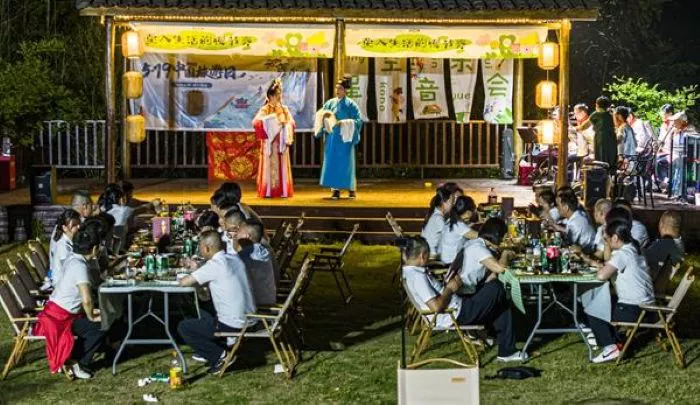Across China’s picturesque villages, a quiet revolution is transforming traditional accommodations into vibrant cultural hubs. The integration of Intangible Cultural Heritage (ICH) elements into homestays has emerged as a powerful driver for rural revitalization and cultural preservation. From Zhejiang’s water towns to Xinjiang’s desert oases, this innovative model demonstrates how ancient crafts and performing arts can thrive in contemporary tourism settings.
In Ningbo’s Longguan Channa Art Homestay, guests don’t merely observe – they participate. Founder Dai Ruxidan, a former Yongju Opera performer, has transformed her property into a living theater where visitors join workshops with master artists. Similarly, Yangshuo’s “Gege Tree” homestay introduces global travelers to Tai Chi through daily sessions with inheritor Chen Ronghua. These cases exemplify how authentic cultural transmission can become a homestay’s core competitive advantage.
Xinjiang’s “Cat Nest Inn” represents perhaps the most comprehensive integration model. The property functions as both accommodation and ICH incubator, supporting artisans specializing in earth pottery, engraving, and mural restoration. Founder Wang Xuanyuan’s “symbiotic development” approach provides workspace for inheritors while generating income through educational programs and creative product development. This virtuous cycle has already cultivated four new inheritors in specialized crafts.
The movement has gained institutional support nationwide. Zhejiang province has established China’s first evaluation system for ICH homestays, identifying 408 certified properties that have helped revive 20 endangered heritage items. Successful cases like Rui’an’s Weijianshan Dyeing Homestay demonstrate the economic potential – its 2 million yuan annual revenue from indigo dyeing and woodblock printing workshops dwarfs room income. Anhui’s Yixian County takes a different approach, converting Ming-Qing dynasty merchant homes into cultural complexes where guests craft Hui-style lanterns under master guidance.
Despite promising developments, challenges persist. Experts note superficial “ICH-washing” at some properties lacking authentic cultural depth. The shortage of operators skilled in both heritage interpretation and hospitality management remains acute. As Nankai University researcher Tuo Yanzheng observes, “The true test lies in creating immersive experiences that honor heritage authenticity while meeting modern traveler expectations.” With standardized guidelines now emerging and cross-sector collaborations deepening, China’s ICH homestay movement appears poised for sustainable growth as a global model for cultural tourism innovation.
Related Topic:
- “Cultural and Natural Heritage Day” Ignites Traditional Culture Craze
- Cover-More Travel Insurance Wins Big at 2025 WeMoney Travel Awards
- TTC Plans Major Investment to Strengthen Tour and Cruise Brands Worldwide

